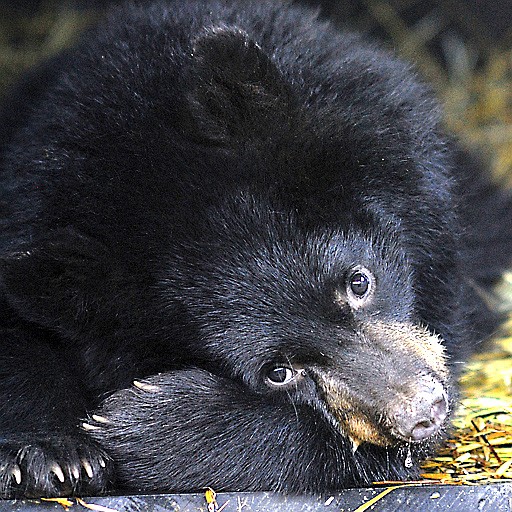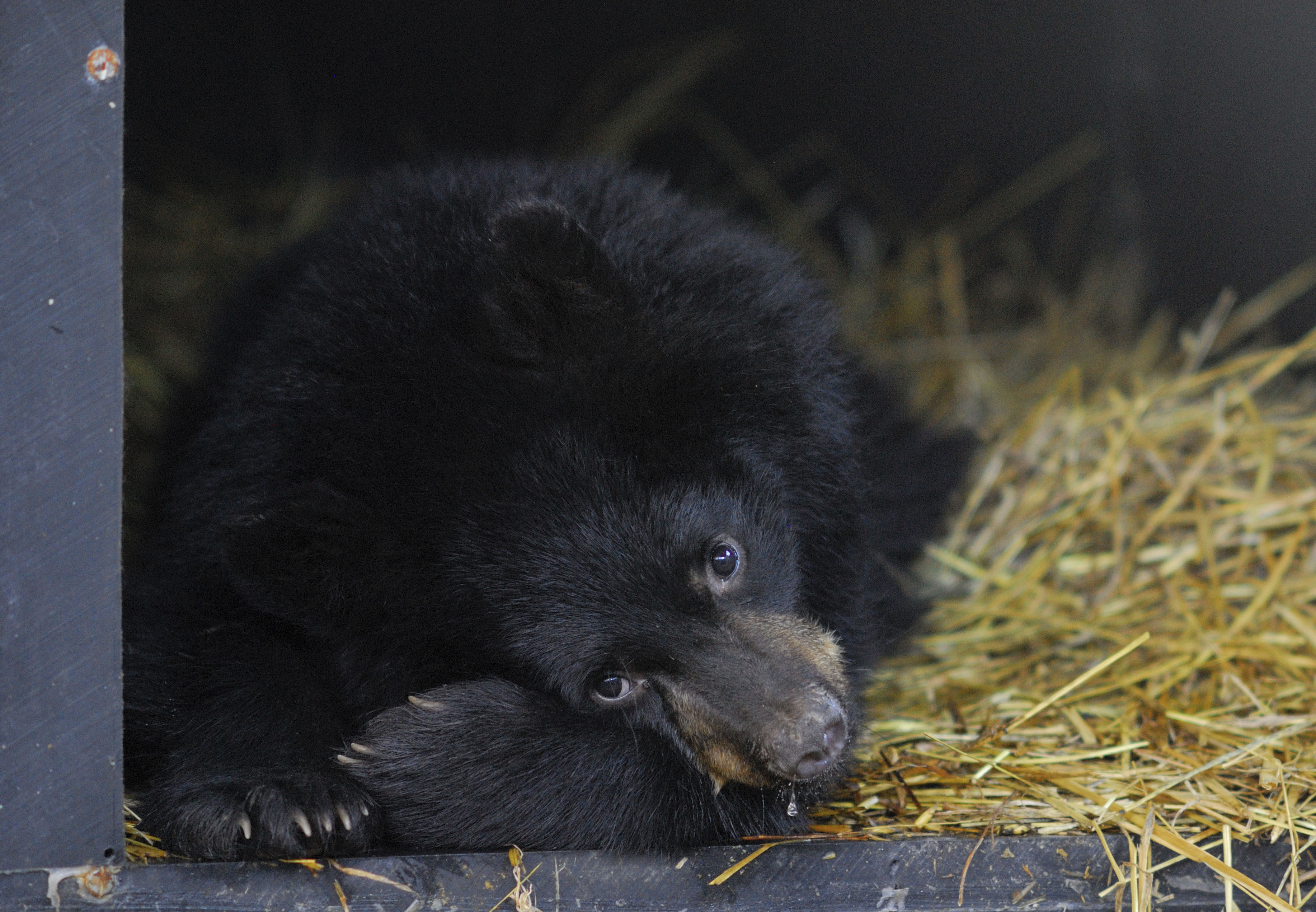By RANDOLPH E. SCHMID
AP Science Writer
WASHINGTON - Hibernating bears set their energy demands on low, but unlike most other animals that take long winter naps they don't chill out very much, researchers reported Thursday.
Figuring out how they cut energy use but still keep their body temperature relatively warm could one day have important implications for treating victims of heart attack, stroke and other conditions, scientists hope.
The body temperature of small hibernating mammals can drop to near freezing. But that is not the case for the more human-sized black bears, according to the new research published in the journal Science. The findings also were presented at the annual meeting of the American Association for the Advancement of Science.
The study's senior author, Brian M. Barnes of the Institute for Arctic Biology at the University of Alaska, noted that after hibernating, black bears don't suffer the loss of bone and muscle mass that occurs in humans after a long period of inactivity.
He said that if scientists could better understand the mechanisms behind the lower metabolic demand, it might be possible to develop new therapies and medicines for people.
While it would require a lot more research, scientists say understanding how the process of hibernation works might aid in preventing osteoporosis and muscle atrophy from disuse - possibly allowing doctors one day to place injured, disabled people in a type of suspended or reduced animation until they are healed.
Barnes, Oivind Toien and colleagues studied five black bears - three males and two females - that Alaska wildlife officials had classified as nuisances and removed from areas around people.
The bears were provided with wooden nest boxes fitted with cameras and sound recorders as well as instruments to measure oxygen consumption. The bears each had implanted transmitters to measure their temperature, heart rate and muscle activity.
The scientists found that rather than having their temperature drop to near freezing, the bears went through cycles of several days when their temperature fell to 86 degrees. Then they began shivering and the readings climbed back to about 97 degrees, nearly normal.
However, even though they remained relatively warm, the bears' metabolism fell to very low levels. Their oxygen use was reduced by 75 percent from summer rates and their heart rate fell from 55 beats per minute to 14 beats per minute.
In another surprise, the researchers discovered that bears, like groggy people in the morning, are slow to recover from hibernation. The researchers had expected to find the animals' metabolism returning to normal levels right away. But instead, the bears' metabolic rates did not return to their active levels for two to three full weeks.
Biologist Lynn Rogers of the North American Bear Center in Ely, Minn., said his studies have shown that hibernation varies with how well fed bears are.
"Well-fed bears don't have to drop their temperature as much ... The bears that are skinny have to drop their temperatures to as low as 88, and become much more inactive in their dens."
If well-fed bears "are sleeping, I can usually hear their heart rate; it echoes in the den on a quiet winter day. If the skinny ones are sleeping, it's hard to wake them up and you can't hear a heart rate," he said in a telephone interview.
Gerhard Heldmaier, a specialist in animal physiology at Philipps University in Marburg, Germany, termed it surprising that, unlike small mammals, the reduced metabolism is primarily responsible for hibernation in bears, with temperature playing only a minor role.
Yet the study shows that even without a major temperature drop, bears do in fact hibernate, said Heldmaier, who was not part of the research team.
The research was supported by the U.S. Army Medical Research and Materiel Command, National Science Foundation, National Institutes of Health, Stanford University, American Heart Association and the Fulbright Program.
---
Online: http://www.sciencemag.org

